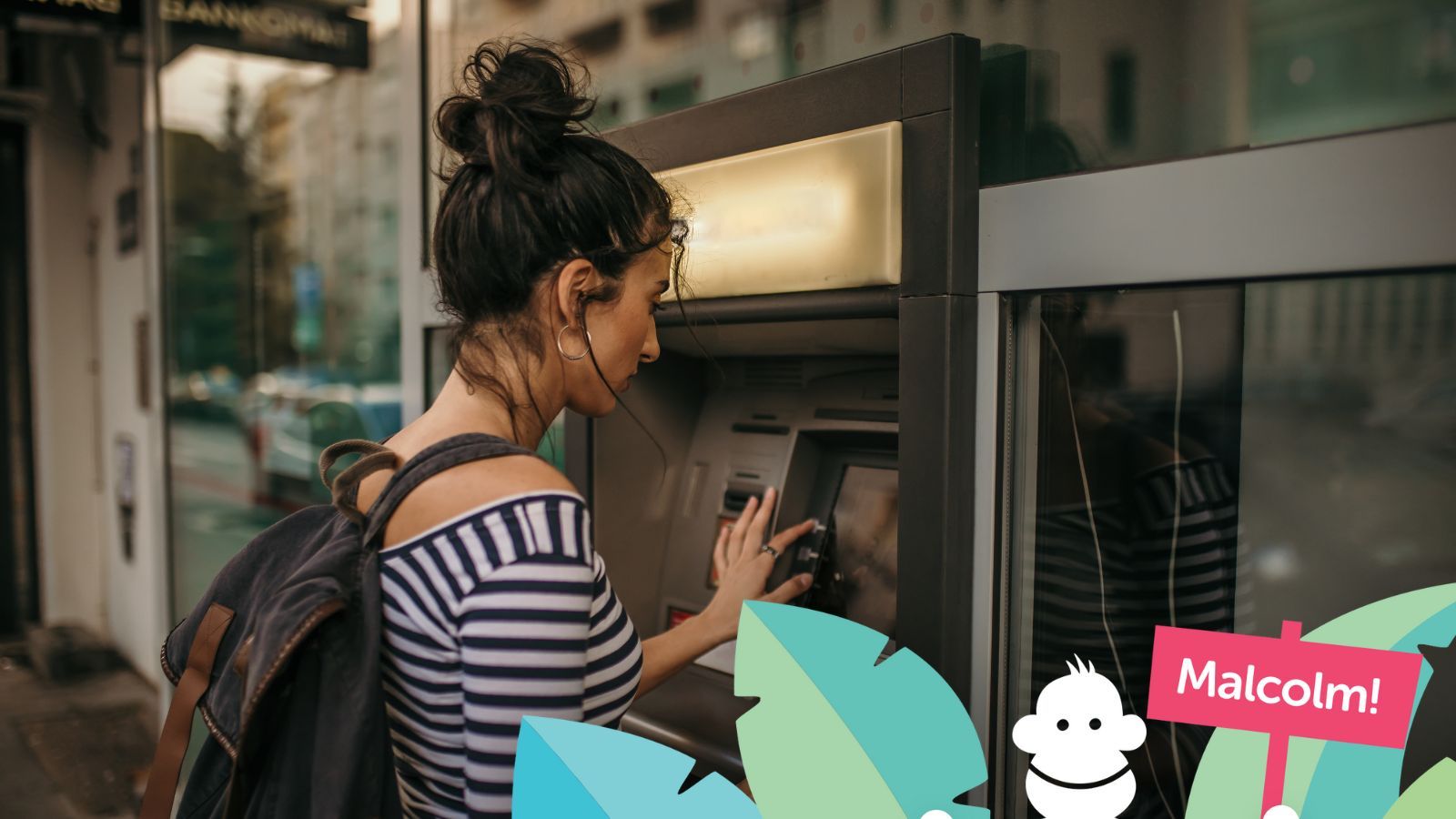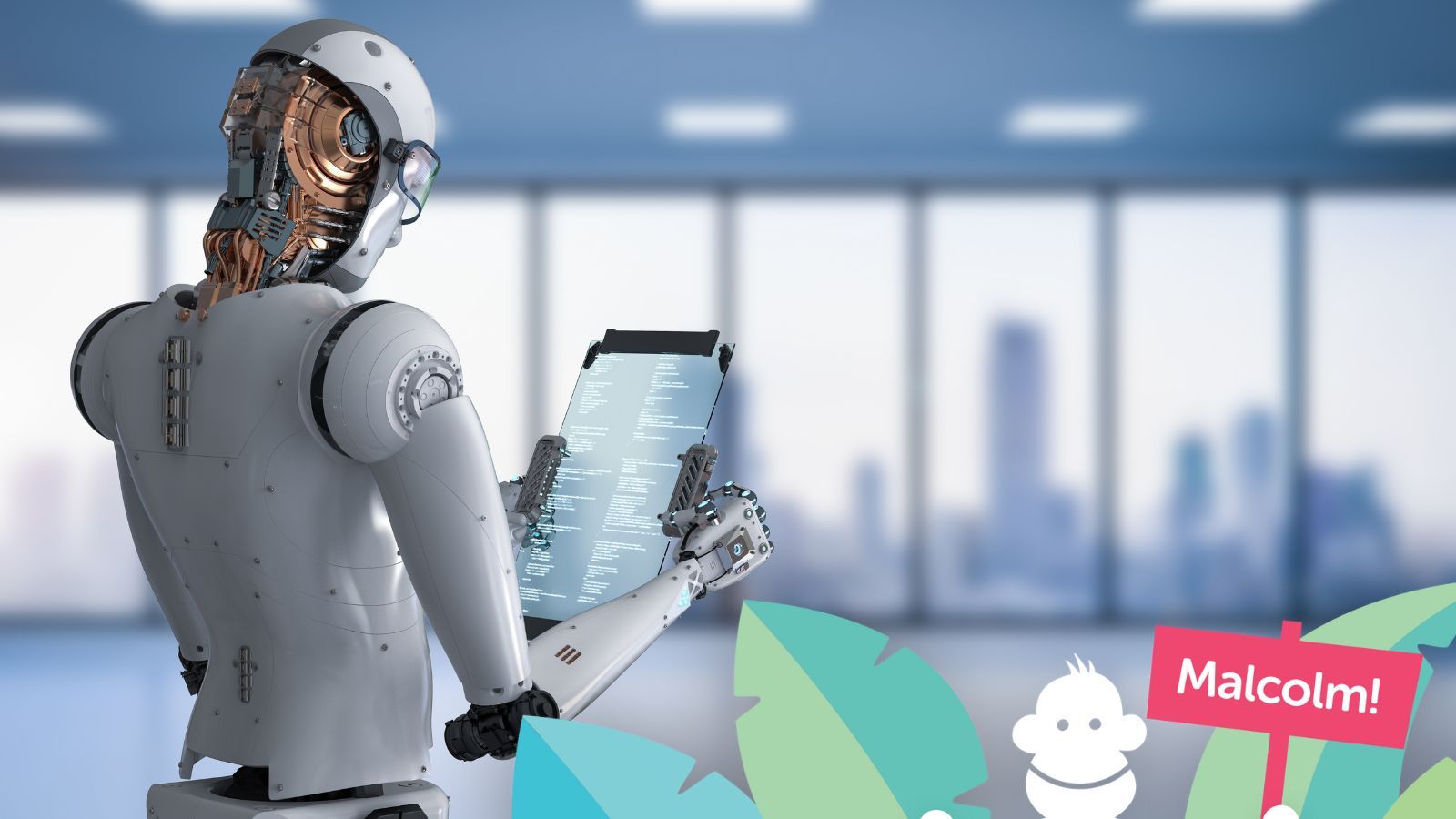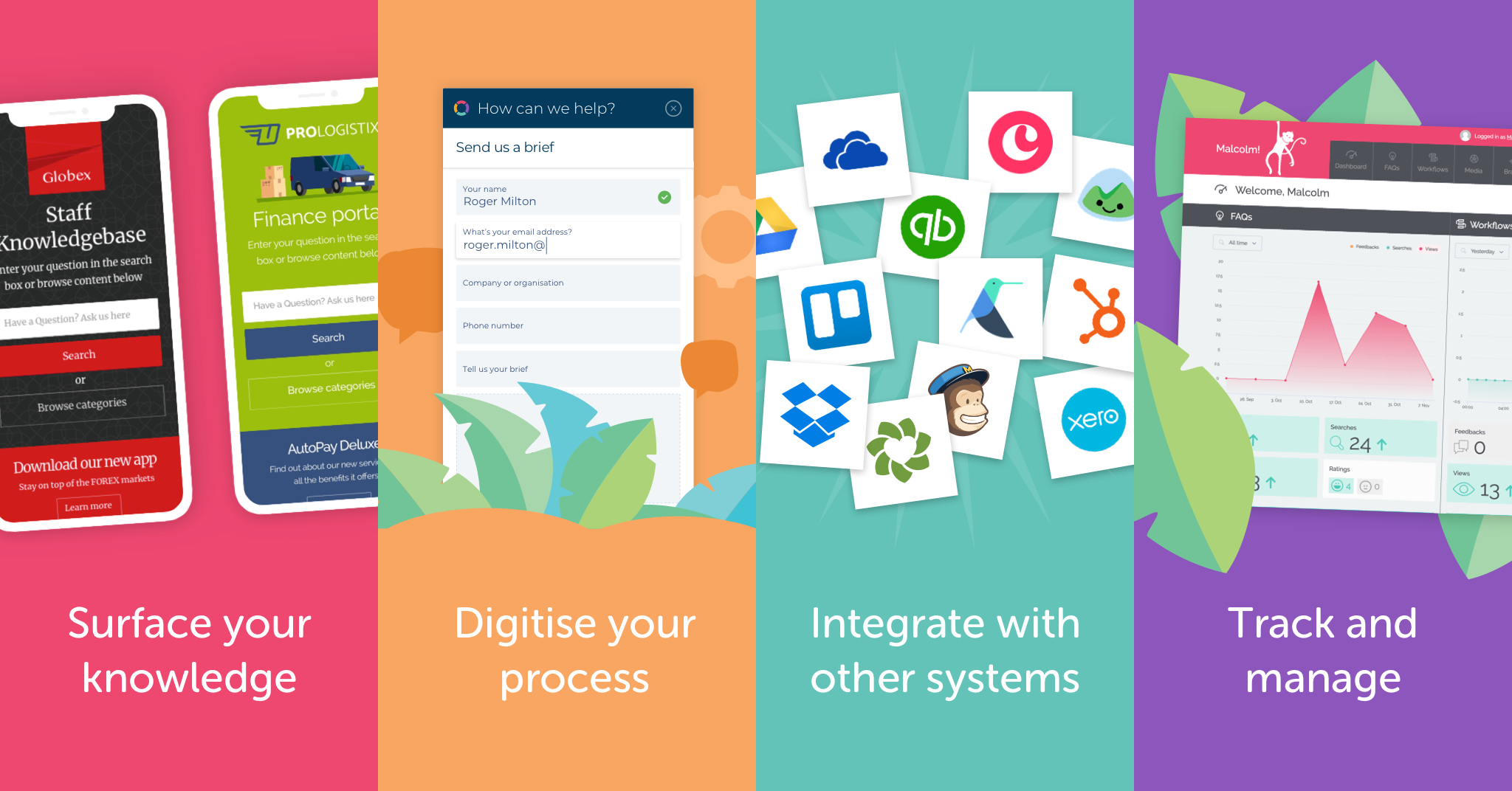Think customer self-service is a recent invention? Think again! The origins of self-service are fascinating and in some cases surprising. Join us as we take a look at the history of all things self-service related and ponder where things might go next.
Introduction
In today's fast moving world the concept of self-service has become so ingrained in our daily lives that it's easy to assume it's a product of modern technology. From self-checkout lanes in supermarkets to online banking, the convenience of self-service seems like a recent innovation designed to keep up with our increasingly digital lifestyle. However the roots of self-service stretch far back into history, revealing a fascinating journey that mirrors the evolution of society and technology.
The origins of self-service are both intriguing and surprising and offer a glimpse into the innovative spirit of past generations. It's a story that spans from the ancient civilizations that first introduced the concept of self-sufficiency to the technological advancements of the 20th and 21st centuries that have transformed how we interact with businesses and services. This journey through time not only highlights the milestones in the development of self-service but also reflects the changing needs and behaviours of consumers.
As we delve into the history of all things self-service related, we'll uncover the pivotal moments that have shaped its evolution and consider the technological, social, and economic forces that have driven its expansion. From the humble beginnings of vending machines to the sophisticated digital platforms of today, the evolution of self-service is a testament to human ingenuity and the relentless pursuit of convenience and efficiency.
Join us as we explore the fascinating history of self-service and ponder where things might go next. As we look to the future it's clear that the journey of self-service is far from over with emerging technologies promising to redefine our understanding of convenience and accessibility. The story of self-service is a compelling narrative of adaptation and innovation, reminding us that the desire to improve our lives through self-sufficiency is a timeless endeavour.
I. The origins of self-service
The concept of self-service, contrary to popular belief, is not a product of the 20th century but has roots that reach deep into the annals of history. Its origins can be traced back to ancient civilizations, where the seeds of self-sufficiency and independence in trade and commerce were first sown.
Ancient beginnings
In ancient societies, the idea of self-service began with the basic principle of direct transactions. Marketplaces in civilizations such as those in ancient Greece and Rome were designed for individuals to select and purchase goods directly without the intermediary service of a vendor. This direct interaction with products allowed buyers to inspect, choose and decide on their purchases independently, embodying the earliest form of self-service.
Self-service in retail and banking
The modern concept of self-service as we understand it today began to take shape with the advent of retail innovations. One of the earliest recorded instances was in 1916 when Clarence Saunders opened the first Piggly Wiggly store in Memphis, Tennessee. This store was revolutionary for its time, introducing a model where customers picked out their own goods without the assistance of a store clerk leading to the birth of the modern supermarket.
Similarly, in banking, the introduction of the first automated teller machine (ATM) in 1967 by Barclays Bank in London marked a significant milestone. This innovation allowed customers to conduct transactions without the direct aid of bank personnel, paving the way for the self-service banking that is ubiquitous today.
The philosophical underpinnings
The rise of self-service in various sectors was not just a result of technological advancements but also reflected a changing societal attitude towards consumer independence and efficiency. The philosophy behind self-service is deeply rooted in the desire for empowerment, allowing individuals to have control over their purchasing and transactions. This shift not only catered to the growing demand for convenience but also mirrored the broader societal trends towards individualism and self-reliance.
II. The self-service revolution in the 20th century
The 20th century marked a period of unprecedented change in the realm of self-service driven by technological innovations and a shift in consumer behaviour. This era saw the transformation of self-service from a novel concept into a fundamental aspect of everyday life.
Technological advancements
The technological boom of the 20th century played a pivotal role in advancing self-service. One of the earliest and most significant innovations was the vending machine which allowed consumers to purchase products without the need for a cashier. Originating in the late 19th century these machines became increasingly popular throughout the 20th century for their convenience and ability to offer services around the clock.
Another landmark in the self-service revolution was the introduction of the supermarket model by Clarence Saunders with Piggly Wiggly. This model radically changed the retail landscape allowing customers to browse and select goods independently leading to the widespread adoption of self-service in retail environments.
The digital age: ATMs and self-checkout systems
The latter half of the 20th century introduced digital technology into the self-service equation. The Automated Teller Machine (ATM), first introduced in 1967, revolutionised banking by enabling customers to perform financial transactions without the assistance of a teller. This innovation marked a significant step towards the digital self-service platforms we see today.
In retail the development of self-checkout systems further exemplified the self-service revolution. Introduced in the 1980s these systems allowed shoppers to scan, bag and pay for their purchases without direct store staff interaction. This not only streamlined the shopping experience but also reflected the growing consumer preference for speed and efficiency.

Impact on society
The self-service revolution of the 20th century had a profound impact on society. It reshaped consumer expectations, setting a new standard for convenience and efficiency. The ability to access goods and services independently - without the constraints of time or human interaction - marked a significant shift in the way businesses operated and interacted with their customers.
These advancements also laid the groundwork for the digital transformation that would follow in the 21st century. The integration of technology into self-service models opened up new possibilities for innovation and convenience, setting the stage for the next wave of self-service evolution.
III. The digital transformation
As the 20th century gave way to the 21st, the self-service revolution underwent a profound digital transformation. This era was marked by the rapid advancement of internet technology and mobile computing, fundamentally changing the landscape of self-service and setting new standards for convenience, efficiency and personalisation.
The rise of the internet
The advent of the internet was a pivotal moment for self-service. Online banking and shopping emerged as early adopters of the digital self-service model, allowing consumers to manage their finances and make purchases from the comfort of their homes. This shift not only offered unprecedented convenience but also introduced a level of efficiency that traditional self-service models could not match.
Self-service portals became a standard feature for many businesses, providing customers with 24/7 access to services, account information and support. These portals represented a significant leap forward in customer service, enabling users to perform a wide range of actions without the need for direct interaction with company representatives.
Mobile technology and apps
The proliferation of smartphones and mobile apps further accelerated the digital transformation of self-service. Mobile technology made self-service accessible anytime and anywhere, significantly enhancing the user experience. Apps for banking, shopping, ticket booking and more became commonplace offering a seamless, intuitive interface for users to interact with businesses and services on the go.
This era also saw the rise of QR codes and mobile payment systems - simplifying transactions and making mobile devices central to the self-service experience. The convenience of scanning a code or tapping a phone to make a payment epitomised the ease and efficiency that digital self-service aimed to achieve.
Personalisation and user experience
Digital transformation brought with it the ability to personalise the self-service experience. Leveraging data analytics and AI, businesses could tailor their self-service platforms to meet the individual needs and preferences of their customers. This level of personalisation not only improved customer satisfaction but also enhanced the effectiveness of self-service by making it more relevant and engaging.
Challenges and opportunities
The digital transformation of self-service presented both challenges and opportunities. Issues such as digital security, privacy and the digital divide emerged as significant concerns. However, the opportunities for innovation and improvement in customer service were unparalleled. Businesses that embraced these digital self-service models found new ways to connect with their customers, streamline operations and create value.

IV. Self-service in the age of AI and automation
The advent of artificial intelligence (AI) and automation technologies has ushered in a new era for self-service, transforming it from a simple transactional process to an interactive and personalised experience. This evolution represents a significant leap forward, leveraging the power of AI to redefine the boundaries of convenience, efficiency and customer engagement.
AI driven innovations
One of the most visible impacts of AI in self-service is the proliferation of virtual assistants and AI chatbots. These intelligent systems are capable of understanding and processing natural language, enabling them to assist customers with a wide range of requests from answering queries to completing transactions. Unlike their human counterparts, these AI-driven assistants are available 24/7 providing instant support and significantly reducing wait times.
Automated personal shopping and styling services represent another innovative application of AI in self-service. By analysing customer preferences, purchase history and even social media activity, these services offer personalised recommendations, making the shopping experience more tailored and engaging. This level of personalisation was unimaginable in the early days of self-service but is now becoming increasingly common, thanks to AI.
Machine learning and predictive customer service
Machine learning, a subset of AI, plays a crucial role in enhancing the self-service experience by enabling predictive customer service. This technology can analyse patterns in customer behaviour and predict future needs or issues, allowing businesses to proactively address them before the customer even realises they exist. This proactive approach not only improves customer satisfaction but also fosters a sense of loyalty and trust towards the brand.
Challenges of implementing AI and automation
While AI and automation offer tremendous potential to enhance self-service, their implementation is not without challenges. Issues such as data privacy, the complexity of human interactions and the need for continuous learning and adaptation are significant hurdles. Moreover, there is a delicate balance to be struck between automated service and the human touch, as customers often seek empathy and understanding that AI cannot fully replicate.
The future of self-service with AI and automation
Looking ahead, the integration of AI and automation in self-service is set to deepen, with emerging technologies such as natural language processing, machine vision and robotics playing increasingly prominent roles. These advancements promise to make self-service even more intuitive, efficient and personalised, further blurring the lines between digital and physical service experiences.
V. Challenges and considerations
As self-service technologies continue to evolve, they bring with them a set of challenges and considerations that must be addressed to ensure their effective and equitable implementation. These challenges span technological, ethical and social domains, highlighting the complexity of integrating self-service solutions into our daily lives.
Balancing technology and human touch
One of the most significant challenges in the expansion of self-service technologies is maintaining the delicate balance between automation and the human touch. While AI and automation can offer efficiency and personalisation, they often lack the empathy, understanding and nuanced communication that human interactions provide. Businesses must navigate this balance carefully, ensuring that while self-service options increase, they do not alienate customers seeking a more personal connection.
Privacy and security concerns
The digital transformation of self-service has raised important questions about privacy and security. As businesses collect and analyse vast amounts of personal data to offer personalised services, the risk of data breaches and misuse of information becomes a significant concern. Ensuring the security of customer data and maintaining privacy standards is paramount, requiring robust cybersecurity measures and transparent data practices.
The digital divide and accessibility issues
The shift towards digital self-service platforms also highlights the issue of the digital divide. Not all customers have equal access to digital technologies, whether due to socioeconomic factors, age or disabilities. This divide can prevent a significant portion of the population from benefiting from self-service innovations, exacerbating existing inequalities. Addressing accessibility issues and ensuring that self-service technologies are inclusive and available to all is a critical challenge for businesses and society.
Regulatory and ethical considerations
As self-service technologies become more sophisticated, regulatory and ethical considerations come to the forefront. Issues such as AI bias, the potential for job displacement and the ethical use of automation in customer service require careful consideration and regulation. Developing frameworks that guide the ethical implementation of self-service technologies while protecting both consumers and workers is essential.

VI. The future of self-service
As we look toward the horizon, the future of self-service appears both promising and filled with potential. Emerging technologies and evolving consumer expectations are set to redefine the landscape of self-service, pushing the boundaries of what is possible and shaping new experiences that are more intuitive, efficient and personalised than ever before.
Emerging technologies and their potential impact
The integration of augmented reality (AR) and virtual reality (VR) into self-service platforms is poised to offer immersive experiences that could revolutionise customer engagement. Imagine trying on clothes virtually using AR or navigating a digital twin of a store through VR to select products. These technologies could dramatically enhance the online shopping experience, making it more interactive and engaging.
Blockchain technology also holds significant promise for self-service, particularly in enhancing transparency and security. With its ability to provide secure, transparent transactions and verify the authenticity of products and services, blockchain could become a cornerstone of trust in digital self-service platforms.
Speculations on the future role of self-service in everyday life
As self-service technologies become more embedded in our daily lives, their role is likely to expand beyond traditional domains. We may see the rise of self-service in areas such as healthcare, where patients could manage their health records and appointments more autonomously or in education, with more personalised and accessible learning experiences.
The future of self-service could also see a greater emphasis on sustainability. Self-service technologies could enable more efficient use of resources, from energy-saving smart home devices to self-service recycling stations, contributing to a more sustainable and environmentally friendly lifestyle.
Challenges and opportunities ahead
The path forward for self-service is not without its challenges. Issues such as digital literacy, privacy concerns and the need for inclusive design will need to be addressed to ensure that the benefits of self-service technologies are accessible to all. However, these challenges also present opportunities for innovation, collaboration, and the development of new standards and practices that prioritise user needs and ethical considerations.
Conclusion
The journey through the history and evolution of self-service reveals a fascinating narrative of human ingenuity and the relentless pursuit of convenience and efficiency. From its ancient origins in the marketplaces of Greece and Rome to the digital transformation of the 21st century, self-service has continually evolved to meet the changing needs and expectations of society.
This exploration has highlighted not only the significant milestones in the development of self-service but also the challenges and considerations that have emerged along the way. As we have seen, the evolution of self-service is not merely a tale of technological advancement but a reflection of broader societal shifts towards autonomy, efficiency, and personalization.
Looking ahead, the future of self-service is ripe with potential, driven by emerging technologies such as AI, AR, VR and blockchain. These innovations promise to further transform the self-service landscape, offering even more personalised, efficient and immersive experiences. Yet, as we embrace these advancements, the challenges of privacy, security, accessibility and ethical considerations remind us of the importance of balancing innovation with responsibility.
In conclusion, the story of self-service is a compelling chapter in the broader narrative of human progress. It underscores our capacity for innovation and adaptation, reflecting our ongoing quest to enhance our lives through technology. As we ponder where things might go next one thing is clear: the evolution of self-service will continue to be a mirror of our aspirations, challenges and values as a society.
The journey is far from over, and the future of self-service holds exciting possibilities that are yet to be realised.
Join the conversation with Malcolm!
Are you as passionate about the evolution of self-service as we are? Malcolm! has been at the forefront of exploring and innovating in the self-service domain, driven by a deep passion and expertise that shines through in every aspect of our work. We believe that the future of self-service holds incredible potential to transform our daily lives making them more efficient, personalised and empowering.

But the journey doesn't end here. We want to hear from you! Share your experiences, thoughts and predictions about the future of self-service. Have you encountered any innovative self-service technologies lately? Do you have ideas on how self-service can be improved or transformed? Join the conversation and let's explore the endless possibilities together.
Connect with us on Twitter/X, LinkedIn, Facebook, YouTube or reach out directly. Let's make the future of self-service not just a vision but a reality!
Malcolm! - innovating today for the self-service of tomorrow 🙂
